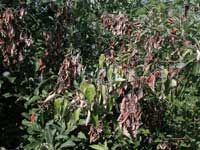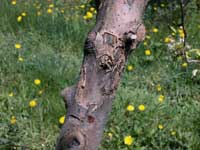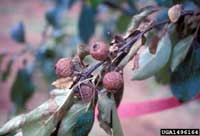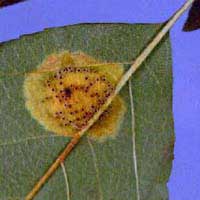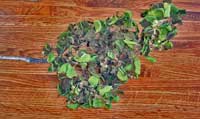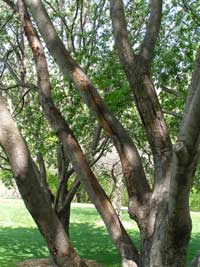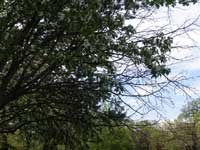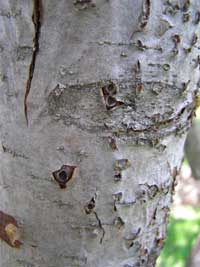Extension > Garden > Diagnose a problem > What's wrong with my plant? > Deciduous > Serviceberry > Leaves discolored and wilted
Serviceberry > Leaves > Leaves discolored and wilted
1 of 4
Fire blight
Erwinia amylovora
- Infected leaves wilt, turn gray then dark brown to black
- Young shoots wilt into a shepherd's crook
- Infected blossoms first turn gray, then black
- Infected leaves and mummified fruit remain attached to the tree, often into winter
- Branch cankers have dark, sunken and cracked bark, sapwood is streaked reddish brown
- Drops of sticky honey-colored liquid can be seen on infected plant parts in warm wet weather <
- More information on fire blight
2 of 4
Juniper broom rust
Gymnosporangium nidus-avis
- Leaf spots start as small yellow to orange spots with a red border and grow into large brown blotches with red margins
- Swollen yellow spots on leaf veins, petioles and green twigs
- Young shoots and leaves can turn completely brown due to a girdling infection on twig or petiole
- White tube-shaped spore producing structures form on infected twigs, petioles and the lower surface of leaf spots in July
- More information on Juniper broom rust
3 of 4
Black witches' broom
Apiosporina collinsii
- Witches' brooms, clusters of numerous weak shoots arising from one point on a branch, occur randomly throughout the tree
- Dark, olive colored spots of fungal fruiting bodies on underside of leaves
- Leaves within witches' brooms are first yellow and stunted, turn black
- Common in wooded, shaded and moist areas
4 of 4
Blister canker
Biscogniauxia marginata
- Dead branches in the canopy
- Elongate, darkened canker on trunk or branch often centered on a crack or wound
- Reddish brown discoloration of sapwood extending up and down from crack or wound
- Round flat gray to black fungal spore producing structures up to ¼ inch across, push through bark on infected branches
- Bark often peels back in rolls on infected branches
- Most common on drought stressed, wounded trees
- More information on Blister canker



